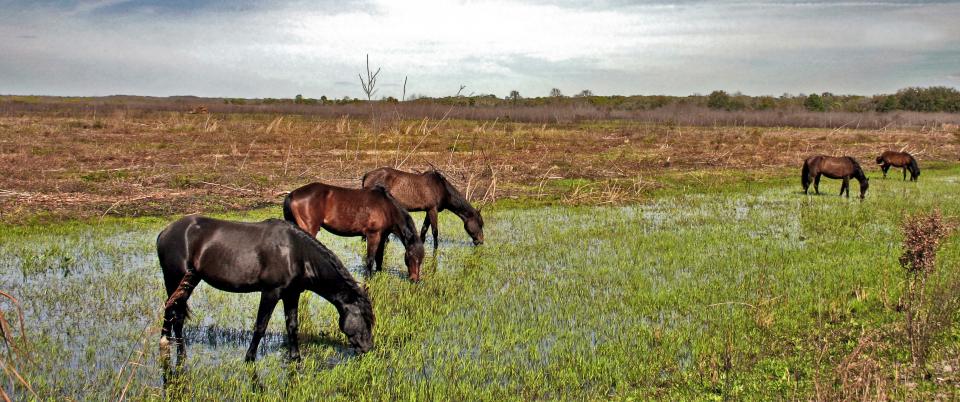



Paynes Prairie is part of the Southeastern conifer forests ecoregion. The prairie itself is a large Floridian highlands freshwater marsh, composed of different herbaceous plant communities that vary based on water depth. Wet, forested areas have southern coastal plain nonriverine basin swamps of bald cypress (Taxodium distichum) and swamp tupelo (Nyssa biflora). Southern coastal plain blackwater river floodplain forests grow along streams. On drier uplands, southern coastal plain oak domes and hammocks of southern live oak (Quercus virginiana) grow in areas with moderately moist soils, and Florida longleaf pine sandhills grow on drier, sandier soils.
Over 270 species of birds can be seen in the park as well as American alligators and small herds of Florida Cracker horses and Florida Cracker cattle, first herded by the Seminole were introduced in 1985. The plains bison were reintroduced to the park from the Wichita Mountains Wildlife Refuge in 1975, as part of the park service goal of restoring Florida’s natural resources to pre-European settler conditions; they roamed this area until the late 18th century. When bison sightings occur, they usually appear along the Cone’s Dike trail. The herd was reduced from thirty-five to seven individuals in the mid-1980s after an outbreak of Brucellosis. In the late 1990s, the herd was again reduced after inbreeding concerns. The buffalo herd reached a peak of 70 animals in 2011. The park began culling excessive animals in 2012, allowing a target population of about 8 to 10 bison to be free to roam the Florida prairie.